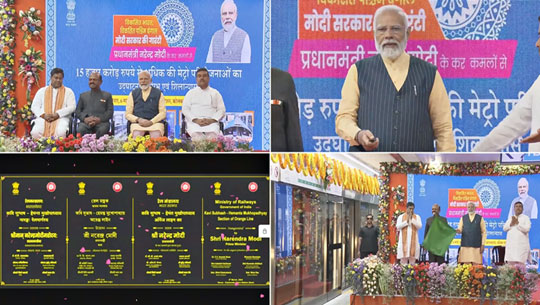

**Proposed Subaqueous Train Linking Dubai and Mumbai Attracts Significant Interest**
*April 2024 – In a daring stride towards advanced transportation, a proposed high-speed underwater rail link connecting Dubai, United Arab Emirates, to Mumbai, India, has intrigued engineers, investors, and the general public. The ambitious initiative, currently in its conceptual stage, is designed to transform travel and commerce between the Gulf region and South Asia.*
### A Concept Under the Waves
The proposed subaqueous train would extend roughly 2,000 kilometers (1,240 miles) beneath the Arabian Sea, positioning it among the longest underwater rail systems ever imagined. Initially brought to light in 2018 by the UAE’s National Advisor Bureau Limited, the project has recently gained fresh momentum following comprehensive feasibility assessments and escalated interest in regional connectivity.
The train would traverse through a submerged floating tunnel or a submerged tube held up by pontoons or anchored to the ocean floor. This cutting-edge design would facilitate high-speed trains achieving speeds surpassing 600 km/h (373 mph), slicing travel time between Dubai and Mumbai down to a mere two to three hours—compared to the present three-hour flight or several days via sea.
### Strategic and Economic Importance
The Dubai-Mumbai underwater train is far more than an engineering feat; it symbolizes a critical economic link between two of the world’s most rapidly expanding areas. The UAE and India enjoy robust economic and cultural relationships, with bilateral trade valued at over $85 billion in 2023. The proposed railway could further amplify trade, tourism, and labor mobility.
Beyond passenger transport, the rail corridor could feature dedicated freight routes, permitting the swift transport of commodities like oil, natural gas, electronics, and textiles. This could dramatically decrease shipping durations and expenses, optimizing supply chain operations between the Middle East and South Asia.
### Technological and Engineering Hurdles
Notwithstanding its potential, the initiative confronts significant challenges. Building a submerged rail line across the Arabian Sea would demand extraordinary engineering accomplishments. Primary concerns encompass:
– **Seismic Activity**: The Arabian Sea is susceptible to tectonic movements, requiring highly resilient earthquake-proof infrastructure.
– **Pressure and Corrosion**: Deep-sea settings impose tremendous pressure and are extremely corrosive, necessitating cutting-edge materials and protective technologies.
– **Ecological Impact**: The environmental ramifications of building and operating an underwater tunnel must be meticulously evaluated to prevent disruption of marine habitats.
Experts estimate that the project might require 15 to 20 years for completion, with expenses likely surpassing $100 billion. International cooperation, state-of-the-art technology, and sustainable practices will be crucial for its fruition.
### Worldwide Reactions and Analogies
The Dubai-Mumbai underwater train has sparked comparisons to other grand infrastructure projects, such as the Channel Tunnel between the UK and France, and Japan’s Seikan Tunnel. Nonetheless, the magnitude and intricacy of this proposed connection far exceed those of existing underwater rail systems.
Global stakeholders—including governmental bodies, private investors, and infrastructure companies—are vigilantly monitoring progress. If actualized, the initiative could establish a new standard in international transportation and spur similar endeavors globally.
### Future Prospects
Though still in its infancy, the Dubai-Mumbai underwater train proposal signifies a rising demand for visionary infrastructure that bridges continents and cultures. As feasibility assessments continue and technological advancements progress, the vision of traversing beneath the waves from Dubai to Mumbai may eventually be realized.
For the moment, the world observes eagerly as engineers, policymakers, and investors delve into the depths of potential—both literally and metaphorically.






